THE LEGACY OF THE MANGALITSA BREEDS
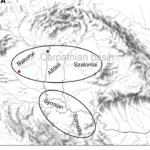
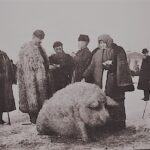
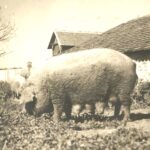
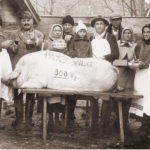

CANADA
THE FOUNDATION BREEDS
HISTORY OF THE PIG BREEDS IN THE AUSTRO-HUNGARIAN EMPIRE
The development of the different Mangalitsa breed strains took place in Hungary, Austria, Croatia, the northern part of Romania, Slovenia and other countries that were part of the Austro-Hungarian empire. To understand the history of the Mangalitsa, it is important to understand the history of the countries where the breed originated.
The Lápi (Moorland) race originated with Laibacher Moorland pigs and wild boar.
This Lápi race might have been the base for the three original pig breeds:
- 1. The blonde Bakonyi pig was probably named after the wooded Bakonyi region near Transdanubia in Hungary
- 2. The Alföldi lard-type pigs were named after the region of the Great Hungarian Plain, also known as Alföldi.
- 3. The red Szalontai pig originated in the area that now is northwest of Romania.
In the late 1700s, early 1800s, spontaneous and conscious breeding started involving the old, very fatty Serbian pig breeds: Sumadia (Sumadinka) and Syrmian (sometimes also called Black Mangalica) and three, already extinct, Carpathian Basin pig races, Bakonyi, Szalontai, and Alföldi, which might be originated from old domesticated pigs brought to the Carpathian Basin by ancient Romans. (Bökönyi 1974; Egerszegi et al. 2003)
FAT-TYPE BREEDS WITH CURLY HAIR
Bakonyi and Alföldi were fat-type swine with curly hair, relatively small body weight and roundish body shape. The red Szalontai breed belongs to meat-type pig. It was tall, bulky, robust and red-coated pig race (HANKÓ, 1940).
All these breeds disappeared or were altered by the end of the 19th century, by the time the Mangalitsa became the dominant swine breed.
THE MANGALITSA BREEDS
1. The Blonde Mangalitsa was most likely initially formed by crossing the small ancient Alföldi pig and the Serbian Sumadia swine, which was bred in the Valley of Morava. Later these pigs were crossbred with the red Szalontai pig and the Bakony pig.
2. The Black Mangalitsa was formed by crossing an unknown breed with the black Croatian Syrmium breed.
3. The Swallow Belly Mangalitsa was formed by breeding the Blonde Mangalitsa with the Black Mangalitsa.
4. The Red Mangalitsa was formed by crossing the Blonde Mangalitsa with the Red Szalontai pig.
The Blonde Mangalitsa is present in the Red and Swallow Belly variety. When a pure Red Mangalitsa is bred to a pure Swallow Belly the litter can be totally blonde. We see very often that the whole litter is of ‘strawberry blonde/ginger’ coloration, because in both are the genetics (Red and Swallow Belly) of the Blonde Mangalitsa.
THE FOUNDATION WAS ESTABLISHED
A ROYAL BREED
The first Sumadia stock (10 sows and 2 boars) arrived in Kisjenö in Hungary in 1833 as a gift from Serbian Prince Milos to Archduke József. A document from 1833 notes the transportation of twelve Serbian Sumadia (Sumadija or sometimes called Schumadinka) breeding pigs, 2 boars and 10 sows of this curly-bristled lard breed, from the Serbian Prince Milos Obrenovic (Belgrade, Serbia) to the Archduke Joseph Anton Johann to his Dömäne in Kisjeno (then in Hungary, now Romania).
The Archduke bred these pigs, in some documents also called “Milos-pigs, Sumadia pigs”, famous for their fat, with the leaner Hungarian lard breeds: the Bakonyi (Bakony), Alföldi and Szalontai pig.
A combination of these breeds became the Hungarian Blonde Mangalitsa. In the years around 1850, the “Kisjeno genetics” of the Blonde Mangalitsa were spread all over the numerous breeding herds in Hungary for lard production. By the end of the 19th century, the Blonde Mangalitsa became virtually the only pig breed of the Austro-Hungarian empire because of their exceptional lard.
This evolved new race, the Blonde Mangalitsa was larger, heavier and fattened better than its vanishing predecessors: the Alföldi, Szalontai and Bakonyi. In fact, the golden age of Hungarian swine breeding began with the Mangalitsa Breed. Reference: Mangalica an indigenous swine breed from Hungary (Review) & ZSOLNAI et al.: Do Mangalica Pigs of Different Colors Really Belong to Different Breeds & MOE
3 MILLION MANGALITSA PIGS

This very fatty “curly haired pig” was originally reserved for Habsburg royalty. However, Mangalitsa was so popular because of its exceptional fat that it became the main breed in Europe by the end of the 19th Century.
Emperor Franz Josef I kept three million Mangalitsa pigs in the 20th century, mainly for the production of exceptional fat!
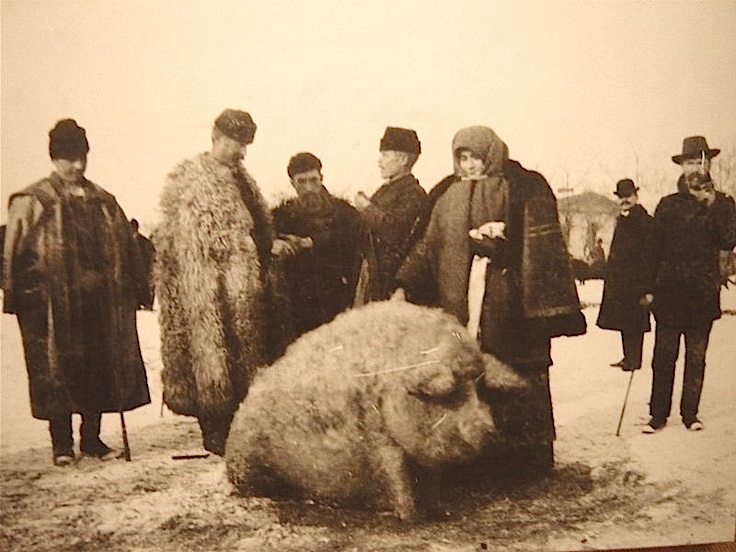
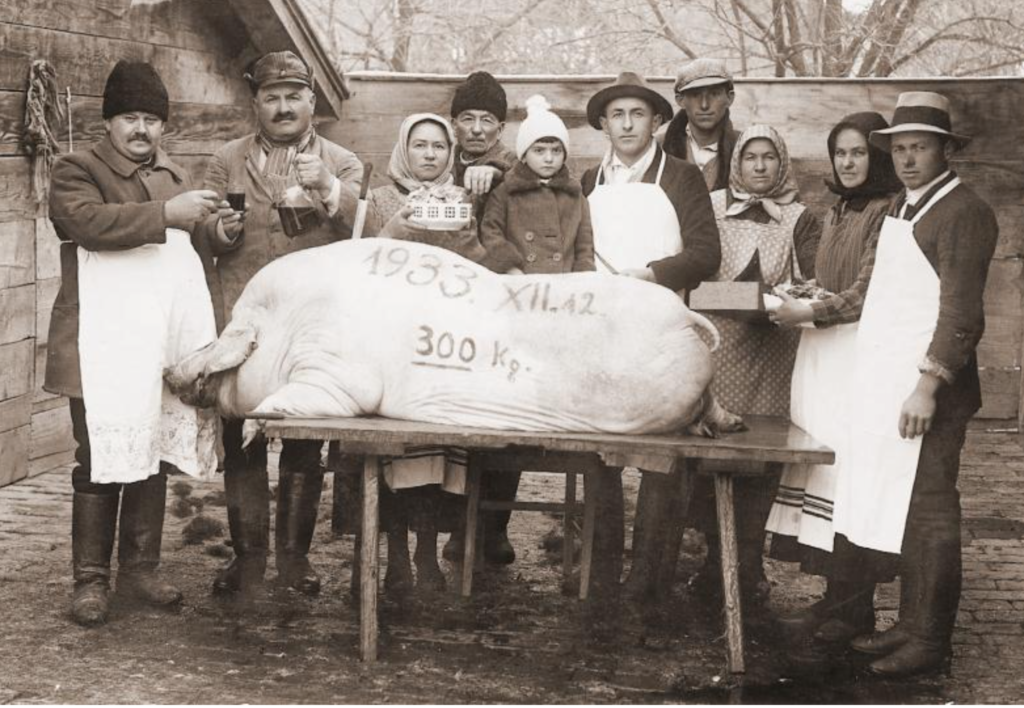
THE DIFFERENT MANGALITSA BREEDS & THEIR COLORS

As noted above, the gift of twelve Serbian Schumadinka (Sumadija,Sumadia) pigs, 2 boars and 10 sows, from the Serbian Prince Milos Obrenovic (Belgrade, Serbia) to the Archduke Joseph Anton Johann to his Dömäne in Kisjeno was the catalyst that created the Mangalitsa. The Archduke bred these pigs, famous for their fat, with the leaner Hungarian Bakonya (Bakonyi) and Red Szalontai pig.
THE BLONDE MANGALITSA was formed first, from the Hungarian Alföldi pig and the Serbian Sumadija pig, with some influence of the Szalontai & Bakonyi breeds. This was the basic type and the most common.
THE BLACKE MANGALITSA (now extinct) was created after the Blonde Mangalitsa and was characteristic in the southern part of Hungary. It was formed from Croatian black “Szeremsegi” (Syrmium) pig and an unknown lard breed. Recently, the Hungarian Mangalitsa Breeder Organisation MOE under direction of Prof. Péter Szabo ‘recreated’ the breed back.
THE SWALLOW BELLY MANGALITSA was established a bit later from the cross-breeding of Blonde Mangalitsa pigs and the Black Mangalitsa pig.
THE RED MANGALITSA is the latest developed breed, the result of cross-breeding Blonde Mangalitsa sows with boars of the Red Szalontai (Szalonta) breed in the beginning of the 19th century. This type was more valuable due to its meat quality and growing performance; its characteristics were nearly the same as the Blond Mangalitsa (HANKÓ, 1940).
THE GRAYISH/BROWN MANGALITSA, the so called wild-color “Vadras” or “Baris” variation is also extinct.
THE HISTORY OF MANGALITSA IN HUNGARY
THE HUNGARIAN BREED ORGANIZATION
Only the Blonde, Red and Swallow Belly Mangalitsa were registered when the National Association of Mangalica Breeders (MOE) was established in 1927. The population of registered hogs included only 2,000 animals in the 1920s. This number increased to 30,000 animals by 1943. Thus in the first third of the 20th century, the Mangalitsa Breed constituted the major part (70-80 %) of the 5-6 million pig population in Hungary. The breed was known by several variations; Mangalitsa, Mangalitza and Mangalica.
The number of registered sows fell from 18,000 head in 1955 to 243 in 10 years, and in another five years to 35-40 (0.2%) animals. From 1955 until 1994, the MOE was not active. In the 1970’s, the number of animals whose origin was checked and known fell below 50. The Mangalitsa was considered an old, inefficient breed, with too much fat, small litters and slow growth compared to the modern breeds. Consumers demanded leaner meat breeds and the Mangalitsa was facing extinction.
By 2008, membership had risen to 150 members producing 8,600 controlled sows.
On 2 November 1994, 64 years later, the Hungarian National Association of Mangalitsa Breeders (MOE) was re-established at the Agricultural University of Debrecen. For the second time, with twenty members, including six breeders, they started the work again. Tribute is due to those few large-scale farms (Pusztaegres, Egyek, Tornyospalca, Kisvarda, Hajduboszormeny) and nameless small-scale producers who instinctively stayed with and saved the Mangalitsa breed. Tribute is due to Gyulai Huskombinat for its pioneering role in processing and product development and Olmos es Toth Kft, a Spanish-Hungarian joint venture, which launched the whole procedure by starting Mangalitsa ham & meat exports.
Reference: The Mangalica pig register 2013 MOE
THE HUNGARIAN BOAR LINES
Initially there were 53 boar lines.
Today, 27 boar lines (3 colors) still exist in Hungary.
Unfortunately, 26 boar lines have been lost.


FORMER BREED SELECTION IN HUNGARY
Below is a Hungarian video from 1955 (with english subtitles) from the Hungarian Ministry of Agriculture used to promote correct Mangalitsa breeding practices.
This is a beautiful video where you can see a Hungarian Mangalitsa stock farm.
THE HISTORY OF MANGALITSA IN AUSTRIA
THE AUSTRIAN BREED ORGANIZATION
After 1950 the Mangalitsa fat-type hog gave place to meat-type breeds. At the end of the 1970’s the Mangalitsa could only be found at Austria ́s wildlife parks or on isolated small farms. In the year 1986, the Endangered Breed Association in Austria (Vegh now Arche Austria) started to take interest in protecting the Mangalitsa pig.
From 1989 to 1990, bloodlines of the Swallow bellied Mangalitsa were brought from the Pannonian area to Austria. In February 2005, several Swallow bellied Mangalitsa boars and – for the first time since the monarchy ended – Blonde and Red Mangalitsa breeding stocks were re-imported from Hungary (MOE) to Austria.

These animals are basically the ancestors of some of the Mangalitsas that are currently in the US. In 2007, 2010 & 2011 animals exported to the US were from offspring of these Mangalitsa. More information on the lines and history is available in the Mangalitsa Breed Manual that you can purchase from MBOAR.
Today there are about 80 registered Mangalitsa breeders in Austria in the official Mangalitsa herd book of the Arche Austria, with a stock size of two-to-ten breeding animals each.
Reference: http://www.arche-austria.at
A second Austrian Mangalitsa breeder organization, founded by Christoph & Isabell Wiesner, the IGWÖ (Interessensgemeinschaft der Wollschweinzüchter), was also a very active Mangalitsa Breeder Organization in Austria until 31 December 2016.
They organized numerous exports of Mangalitsa breeding stock to many European countries (Germany, Sweden, Finland, Norway, the Netherlands, UK, Italy) as well as one export to the U.S. in 2017 (Swallow Belly) and two exports in 2010. On 31 December 2016 the IGWÖ was closed.
THE AUSTRIAN EXPORTS TO THE US
The IGWÖ (Christoph & Isabell Wiesner) exported the first Swallow Belly Mangalitsas in 2007 to Heath Putnam (Wooly Pigs).
In 2010 they exported the first Blonde Mangalitsas to Wilhelm Kohl & Marc Santucci, Pure Mangalitsa.LLC and the 3 colors were also exported by them to Auburn University in 2010 & 2012.
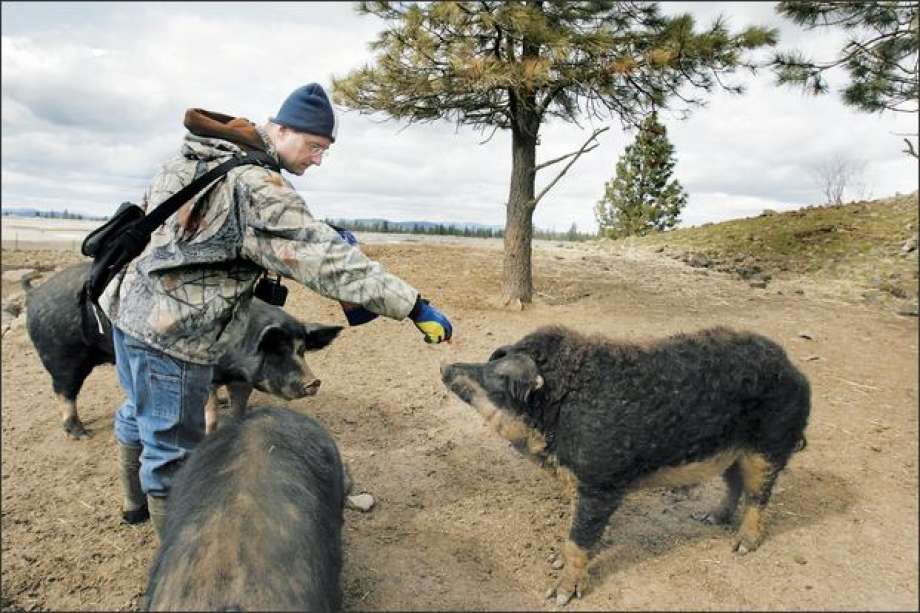
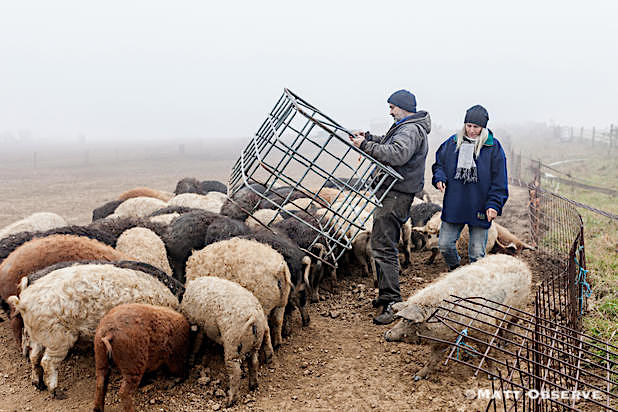
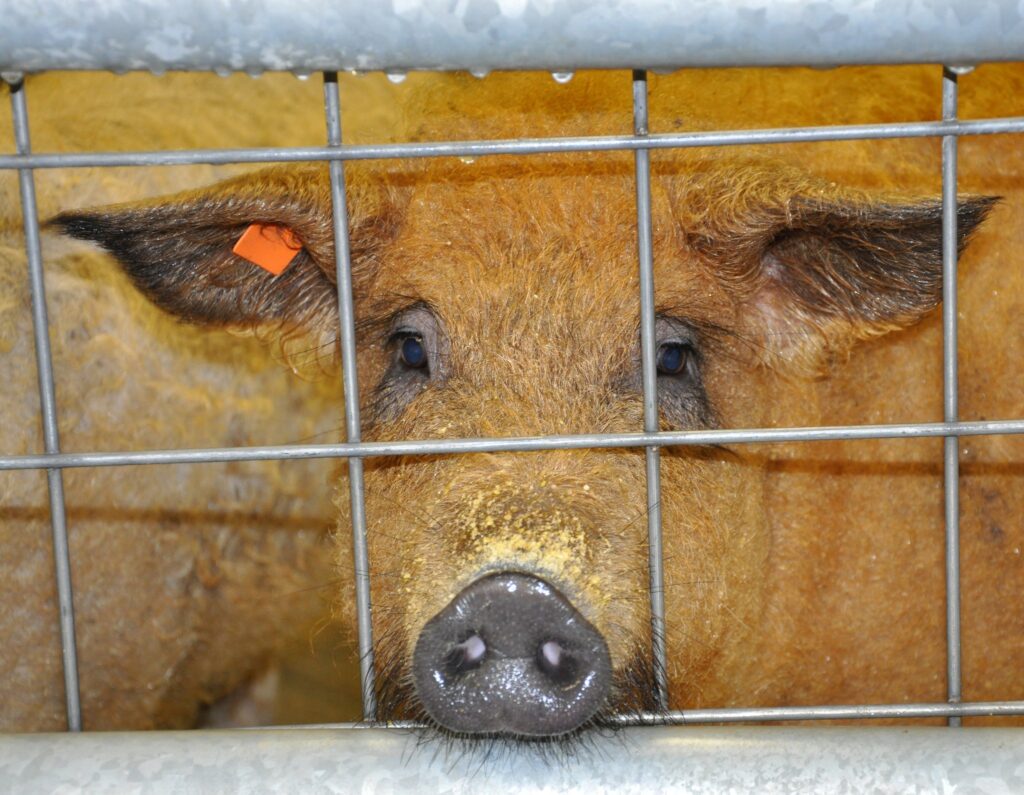
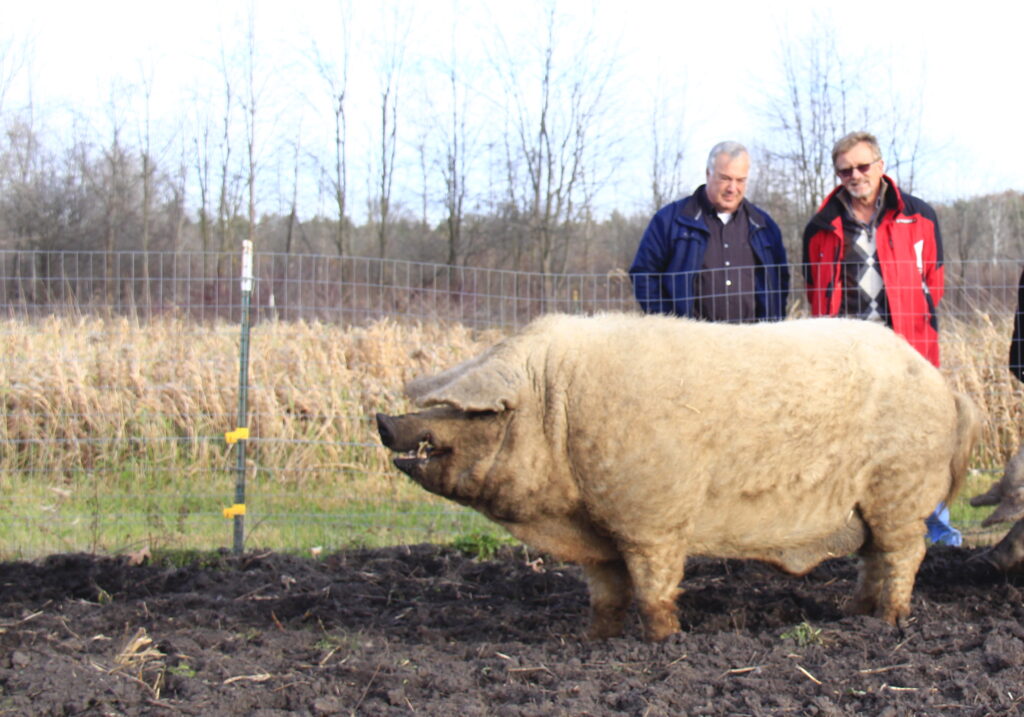



Austria is famous for their exceptional Mangalitsa products such the different varieties of the cured back fat called Lardo / Rüchenspeck.
https://schaetzeausoesterreich.de/wollschweine.html
THE HISTORY OF MANGALITSA IN THE NETHERLANDS
THE DUTCH EXPORTS
As in the US, the Mangalitsa breed is also quite new to the Netherlands. Some pigs came from German zoos and some were transported into the country (illegally) from Austria through France, Serbia or Hungary.
Most of the people who kept Mangalitsas were hobby farmers or private ventures; only 2 meat companies raised Mangalitsa for specialty meat processing. Most of these pigs were crossed in color, only a few were pure of color.
The first official import of Mangalitsas that were registered in a herd book was in 2011. The IGWÖ (Christof and Isabell Wiesner) organized the first official export of Certified Mangalitsa breeding stock from Austria to the Netherlands in 201. In total, 14 breeding pigs (1 boar and 3 gilts of each color) came to the Netherlands. These pigs went to Barbara Meyer zu Altenschildesche / Royal Mangalitsa in Leuvenum, and Wolvarken V.O.F, 3 business men from Amsterdam.

Barbara Meyer zu Altenschildesche was very active in breeding, promoting and educating about the breed. One of her main goals was connecting people internationally who worked with the Mangalitsa pig. She organized several exports of breeding stock to France and Germany in 2012, 2013 & 2014.
In 2014, Pure Mangalitsa.LLC, Wilhelm Kohl, asked her to help with the quarantine and the export of breeding stock from Hungarian stock to the US. At the time, direct export from Hungary to the US was not possible due to import regulations. Thus the piglets to be exported had to be born in the exporting country.
HUNGARIAN LINES FOR THE US
In May 2014, 8 pregnant sows (4 Red Mangalitsas & 4 Blonde Mangalitsas) sired by 6 different boar lines from Hungary/MOE/Peter Toth arrived at Barbara’s quarantine stable in the Netherlands (Speuld). In June/July these sows gave birth to 50 piglets. In September, 18 piglets of these 6 Hungarian boar lines flew in special crates to the US.
More information about the 2014 export and the 2016 export from the Netherlands by Royal Mangalitsa, can be found in the section about US history.

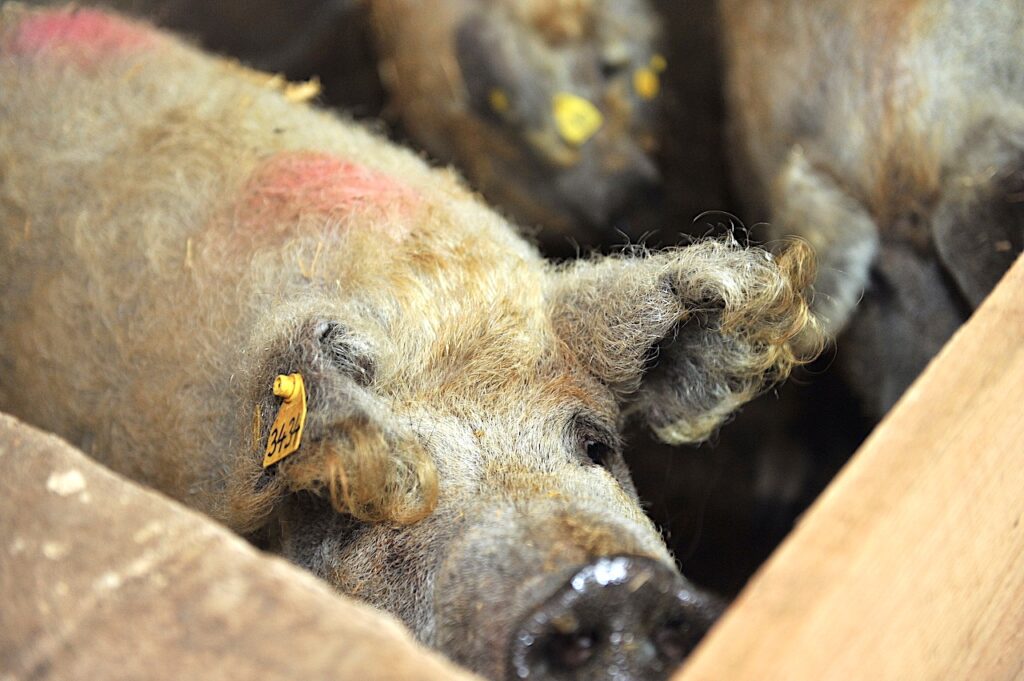
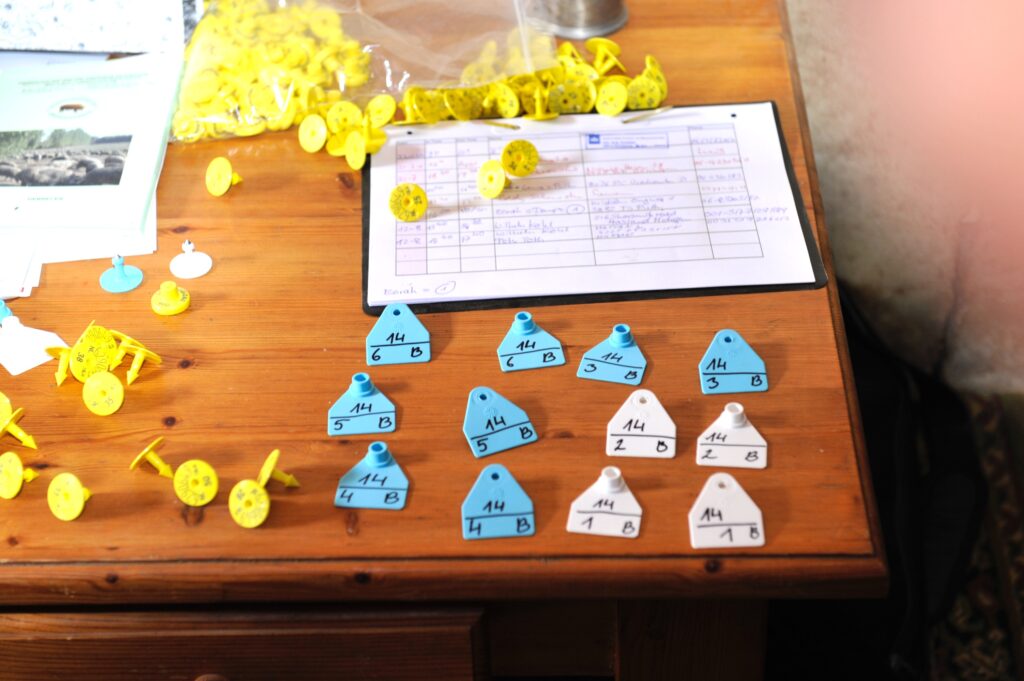
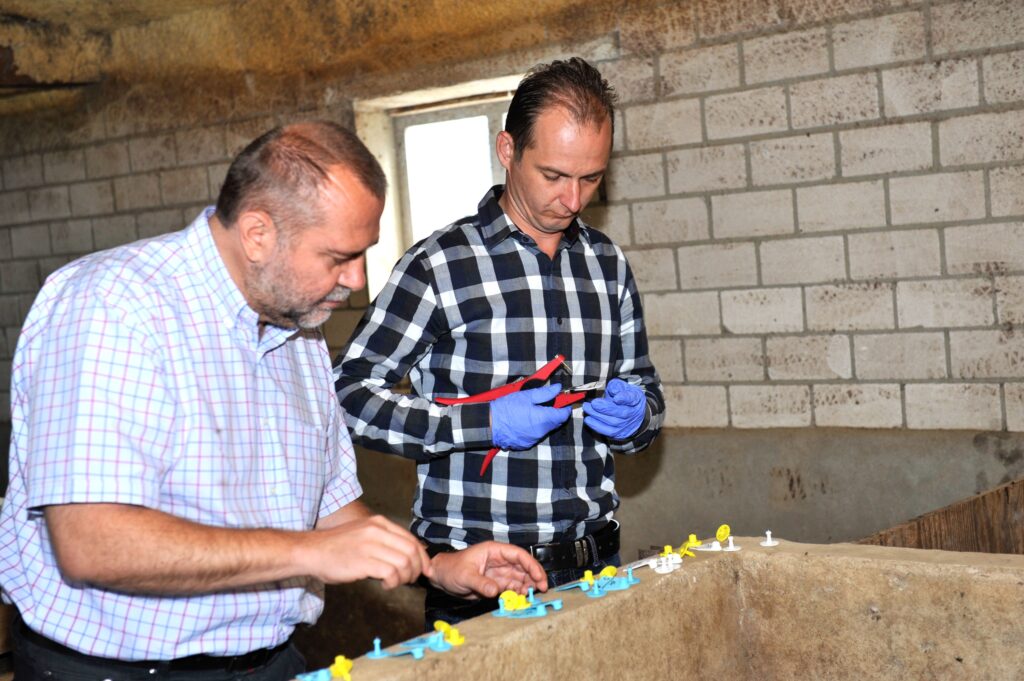
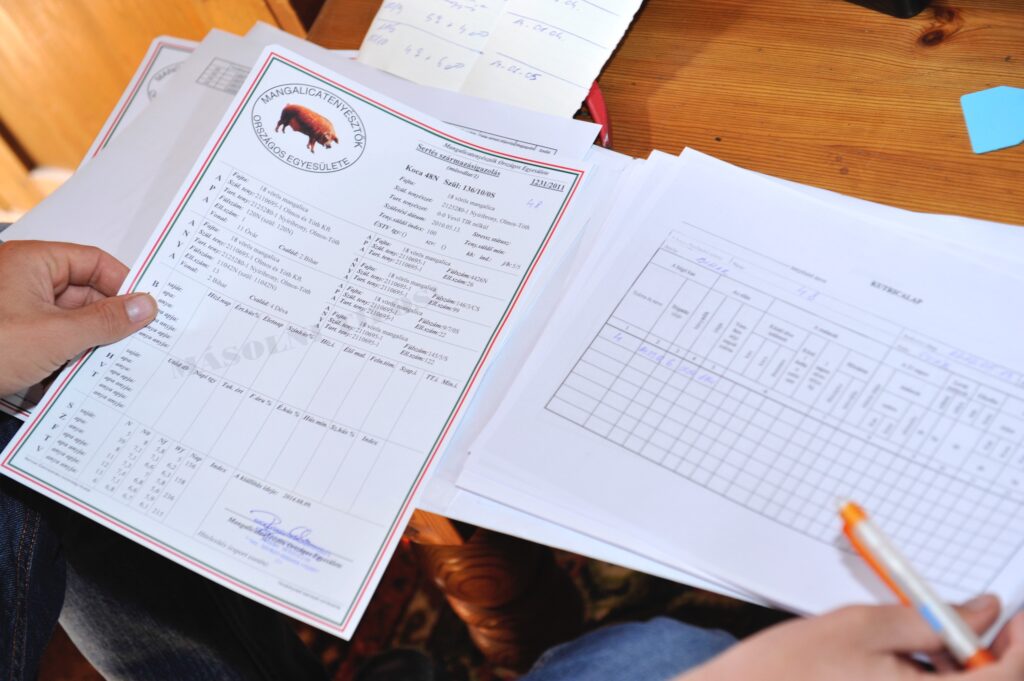
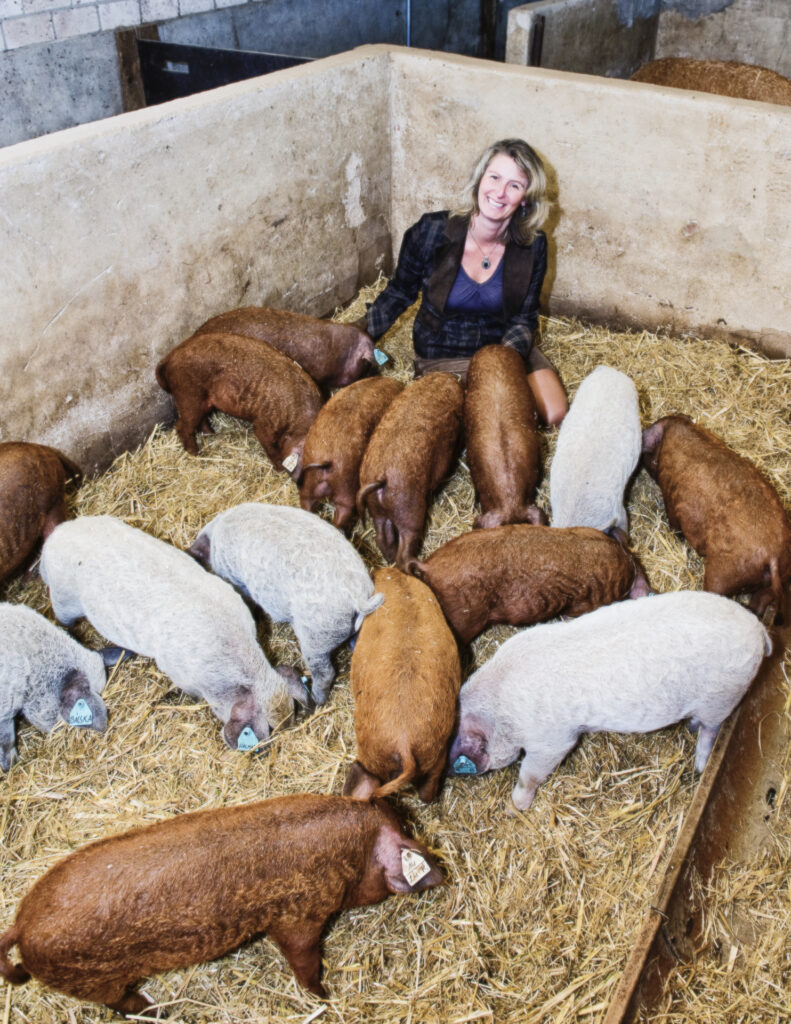

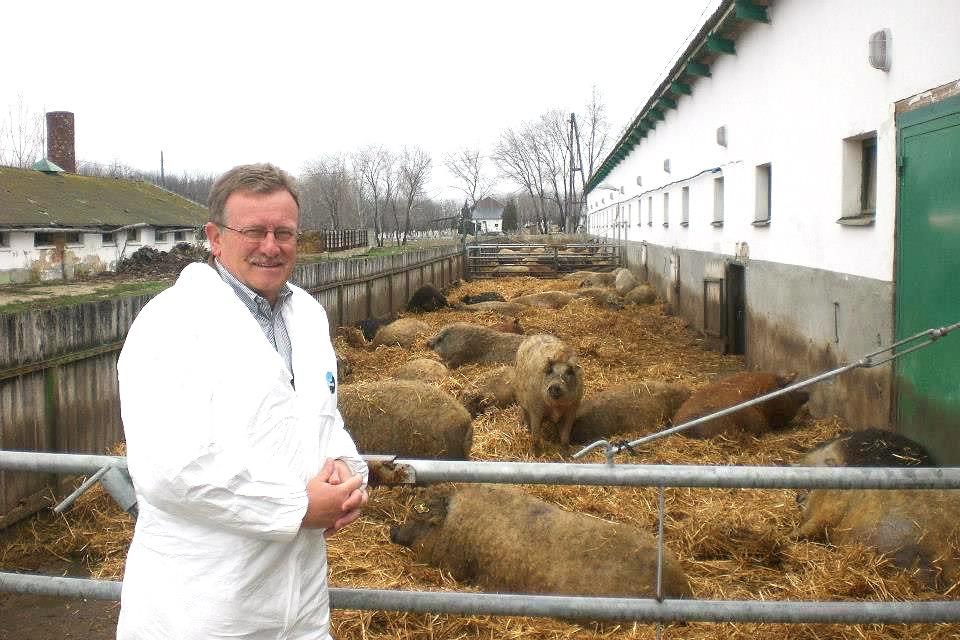
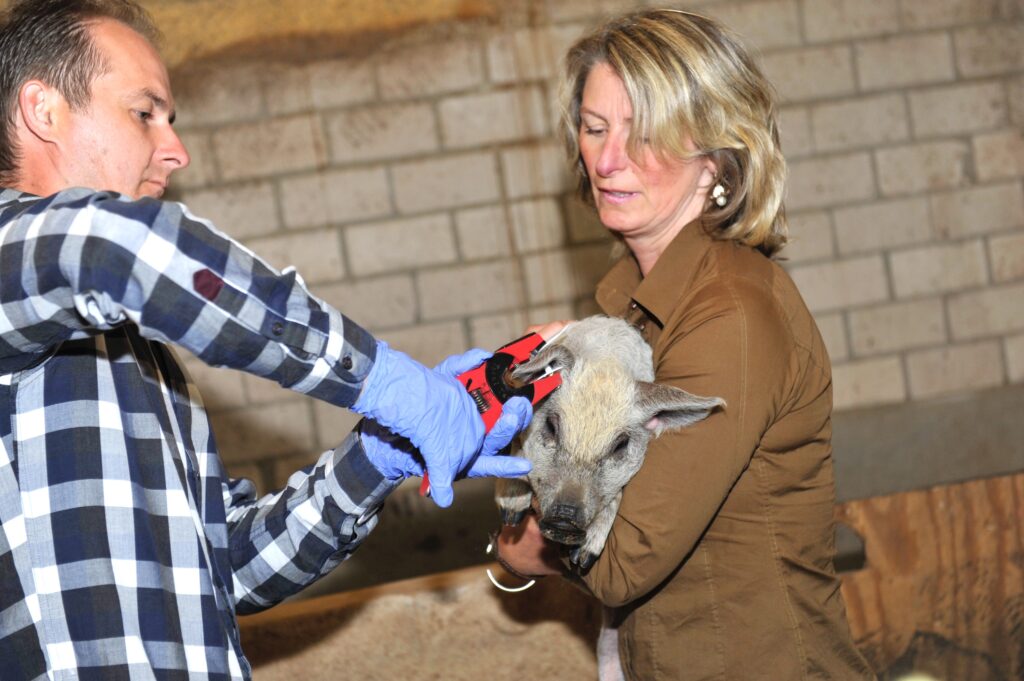
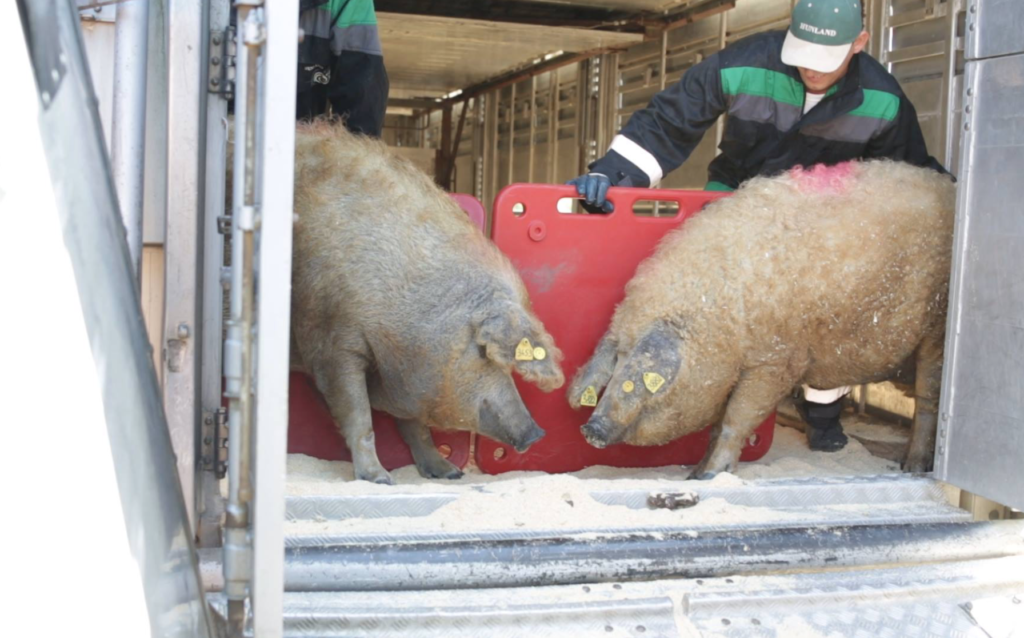
Pictured above ~ Blonde sow #3434 (mother of the Bator line piglets) the Dutch Quarantine facility- Tagging of the piglets for the Hungarian Pedigrees (MOE Certification/Herdbook) – The 18 Blonde & Red Mangalitsa breeding piglets 2 days before export to the US- Arrival of the 8 sows in the Netherlands – Wilhelm Kohl’s first visit at Peter Toth Mangalitsa Farm in Hungary 2012 – – The day of Export at Schiphol Airport in Amsterdam, Netherlands – Arrival of pregnant sows in the Netherlands
THE HISTORY OF MANGALITSA IN THE UNITED STATES
TIMEFRAME OF THE IMPORTS TO THE US
Mangalitsa Imports to the US – owned by:
- 2007, Swallow Belly: Wooly Pigs – Heath Putnam, WA
- 2010, Blonde: Pure Mangalitsa LCC – Wilhelm W. Kohl & Marc Santucci, MI
- 2010 & 2011, Red, Blonde & Swallow Belly: Auburn Univeristy
- 2014, Blonde & Red: Pure Mangalitsa – Pure Mangalitsa LCC – Wilhelm W. Kohl, Marc Santucci & Peter Tóth, MI, Winkler Wooly Pigs – Tim Winkler, CA, Justin King, GA,
- 2016, Red & Swallow Belly: Pure Mangalitsa LCC – Wilhelm W. Kohl, Marc Santucci & Peter Tóth, MI, Winkler Wooly Pigs – Tim Winkler, CA, Sterling Hunter Mangalitsa, MI

THE DIFFERENT IMPORTS FROM EUROPE TO THE US
Austria 2007, 2010 & 2011
From Austria 2007, 2010 & 2011:
The first Mangalitsa pigs (3 boars & 26 sows) were imported in 2007 by Wooly Pigs / Heath Putnam, Washington state. They were of the Swallow Belly variety.
In 2010 the first Blonde Mangalitsa (2 boars & 4 gilts) were imported by Pure Mangalitsa.LLC / Wilhelm W. Kohl & Marc Santucci, Michigan.
In 2011 was an import by Auburn University of Swallow Belly, Blonde and Red stock. No further information is available on amount, gender or color. The pigs were imported for scientific research. Offspring of the Auburn import and from Putnam pigs went to Mosefund Farms.
The breeding stock of these 3 imports was selected by Christoph & Isabell Wiesner (IGWÖ) from several farms in Austria and were registered in the IGWÖ Mangalitsa herd book.
Hungarian 2014
Import of breeding stock from Hungarian lines in 2014
In 2014, the first import of Hungarian-certified boar lines by Pure Mangalitsa.LLC in Michigan took place. The 8 sows (4 Blonde & 4 Red) were sired by different boar lines in Hungary and sent to the quarantine facility of Barbara Meyer zu Altenschildesche (Royal Mangalitsa) in the Netherlands.
After the sows gave birth, specialists of the MOE (Hungarian Breeder Organization) came to the Netherlands to select the 18 piglets for the US from 6 sows (3 blonde & 3 reds). One red litter and one blonde litter was excluded because lack of quality.
In November 2014, the selected piglets arrived in Michigan at Pure Mangalitsa.LLC and at Winkler Wooly pigs / Tim Winkler in California. One blonde breeding pair also went to Justin King in Atlanta. All these pigs are registered in the Hungarian Herd book of the MOE.
Netherlands 2016
Import of breeding stock from the Netherlands 2016:
In 2016,Pure Mangalitsa.LLC imported an additional 6 Red Mangalitsas of Hungarian/Austrian offspring. These red Mangalitsa are partly related to the 2014 imported pigs.
Breeding pigs of this import went to Winkler Wooly pigs, California, Hunter Sterling Mangalitsa and Pure Mangalitsa.LLC in Michigan.
Also 7 Swallow Belly Mangalitsa were in this Dutch import. They were of Dutch genetics offspring of imports from Serbia, Austria and Hungary. In this export arranged by Barbara Meyer zu Altenschildesche (Royal Mangalitsa) were 2 Swallow Belly boars named: Michiel & Melchior.
All these Swallow Bellies are 100% unrelated to the other Swallow Belly pigs in the US of previous imports. They went to Winkler Wooly Pigs -Tim Winkler, CA.
THE HISTORY OF MANGALITSA IN CANADA
MANGALITSA IS IMPORTED TO CANADA
The difference between “Hungarian Boar line” name and “given” name:
BOAR LINE NAMES
There is a difference between Hungarian boar line names (Figure 6) and given names.
We only know the official Hungarian boar line names of the 2010, 2014 & 2016 imports by Pure Mangalitsa, LLC. No Hungarian boar line names are known from the 2007 imports by Heath Putnam & the 2010/11 import by Auburn University .
Some of the Hungarian boar lines are named after the places in Hungary and Romania where they were developed or found, like the blonde line Halmaj (Hungary) or the Red line Szalonta (Romania).
The given names of the 3 Swallow Belly boars imported 2007 are used now in the US as “Boar line names”. The US Mangalitsa register will work with these given names as SB line names. When Hungarian Boar line names are known, as in the 2010, 2014 & 2016 import, the US Mangalitsa register will use these names in combination with the given names. Example: boar Pavel of line Vasvár .

